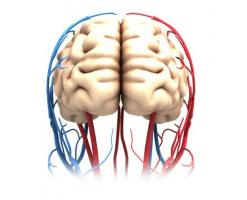Mirror neurons: the biological substrate of our empathy
Have you ever wondered why we yawn when we see others yawn? And why, when you ask someone how they are doing, many times do you know if they are hiding something from you or not?
All these behaviors have to do with the other, not with yourself; are phenomena related to a system of neurons called mirror neurons, which play a fundamental role in human communication and empathy.
- Related article: "Types of neurons: characteristics and functions"
What are mirror neurons?
Until a few decades ago it was thought that the motor, visual, auditory systems, and the rest of the sensory elements of the nervous system worked relatively independently. It was thought that there were a group of neurons that belonged to one system, and other groups that belonged to other systems, and that they did their work without taking each other into account.
In the 1990s, thanks to the development of magnetic resonance and studies of blood flow in the brain, a group of researchers realized that the same group of motor neurons that were activated by the movement of the individual was also activated when that individual saw the action execute.
That is, the same neurons were activated when the person took the glass as when he saw another individual take the glass.
This was an enormous advance in the understanding not only biological of the human being but also in terms of philosophy. Suddenly, your action becomes my action, and that is the phenomenology that arises: what the other does becomes mine. Those scientists had just discovered the neural basis of human social communication, mirror neurons.
And here lies the importance in our day to day of this complex of neurons. These nerve cells allow us not only to know what the other is doing, but also to understand why he is doing it. It is a concept related to that of Theory of mind, of being able to know and understand what the other person feels and how they live.
This is the substrate that appears to be damaged in people with Autism Spectrum Disorders, and is apparently the biological cause of the impairment in social communication exhibited by individuals with this class of alterations.

- You may be interested in: "Parts of the human brain (and functions)"
What are mirror neurons for in our day to day?
Fundamentally they serve so that we can be social beings, so that we take into account our environment and can give adequate social responses. In some way, they work as a social and emotional GPS, which allows you to know your environment to give more adequate social responses from the understanding of what the other does and feels.
Returning to the questions at the beginning, mirror neurons are responsible for the fact that we yawn when we see someone yawn. They also work to detect inconsistencies in communication, as the language, motor, visual and auditory systems work together and can detect whether the body language it is consistent with oral discourse, so we can know if they tell us the truth or not.
Also thanks to them, we can see if there is a connection or not between two people who have just met, by the imitation of gestures. Normally, we unconsciously tend to mirror each other's gestures in a conversation if we are really listening.
This imitation will be registered by the brain of the other person a signal that you are in sync with them. That you understand what he says and what he feels when saying it. What will happen is that the imitation will activate more or less the same mirror neurons in their brain as in ours. In fact, we like more those people who resonate our movements in a subtle way.
If you get a new job, mirror neurons will work automatically, sending you and directing information about the behaviors and emotions of others, so you can know which partner seems kinder to you, who generates more tension, who listens carefully and who doesn't... and to be able to respond to the environment in an adaptive way.
Finally, it should be noted that this article emphasizes the connection of these mirror neurons with the socialization of the individual, but these cells also fulfill relevant functions not so directly related to communication with the others. They are responsible for making a transfer of knowledge from one field to another, emotional self-regulation, learning by imitation and a host of other areas.
I hope that this field of research has been as interesting to you as it was me and that it has aroused your curiosity to understand the brain and its functions.

